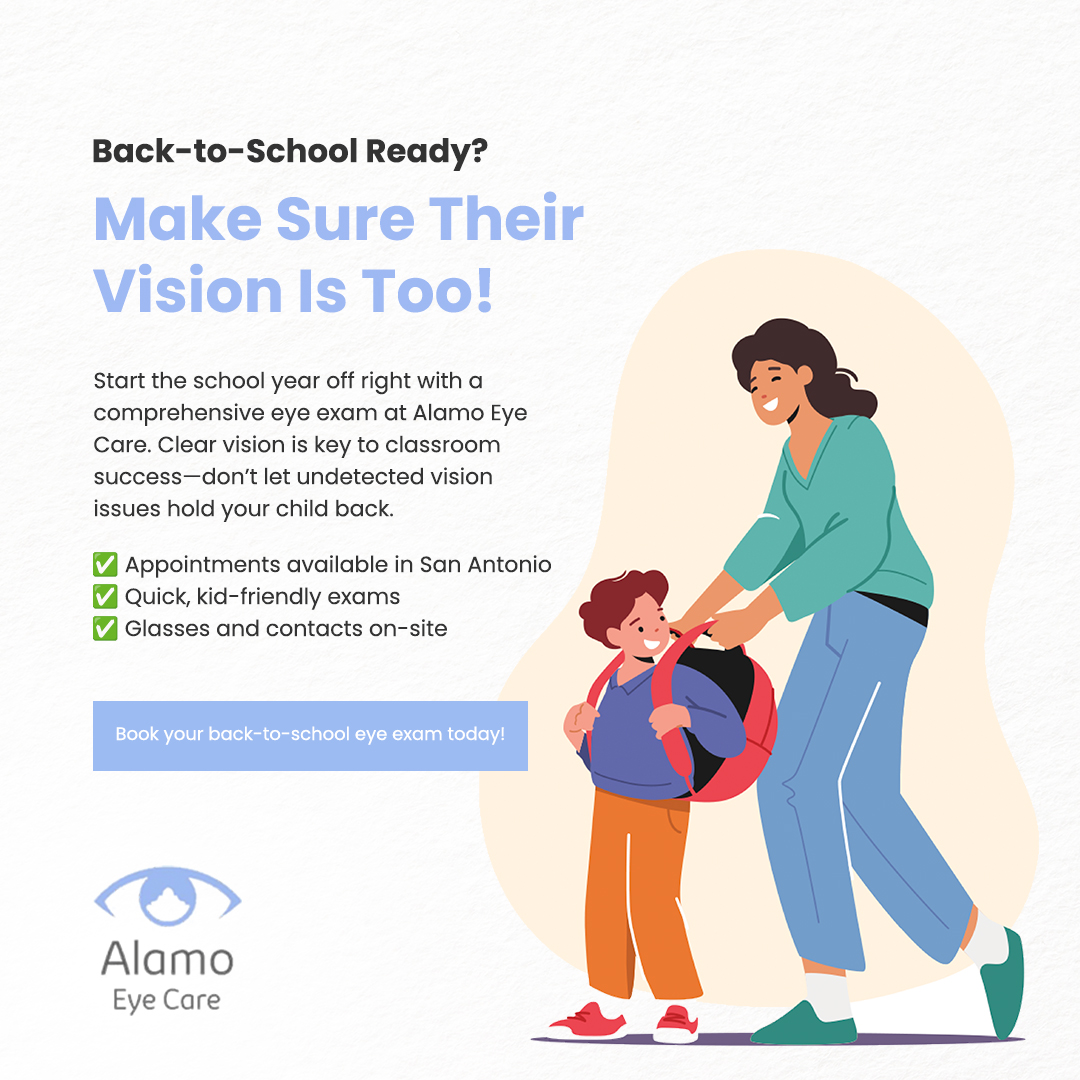Alamo Eye Care
Optometry & Specialty Contact Lens Practice located in San Antonio, TX & Austin, TX
Welcome to Alamo Eye Care
Alamo Eye Care is a premier optometry practice located in San Antonio, Texas. Melanie Frogozo, OD, FAAO, FSLS, Swati Kumar, OD, FAAO, and their expert team offer comprehensive eye care services for children and adults of all ages. The practice sets itself apart from others on all levels, including the staff, physical space, business practices, services, training, and exceptional patient care. In addition, the office is beautiful, modern, full of life and art, and an area people want to work at and visit.
The Alamo Eye Care practice is the ultimate contact lens provider in the Texas Hill Country, concentrating on specialty & medically necessary lenses. The staff offers comprehensive, cutting-edge, evidence-based, compassionate, and thorough eye care services in a warm, welcoming environment.
Patients with farsightedness, nearsightedness, and astigmatism, as well as keratoconus, pellucid marginal corneal degeneration, diabetic eye disease, macular degeneration, and other eye diseases, can turn to Alamo Eye Care specialists for premium care.






Our Locations
Visit us today!1742 North Loop 1604 East Suite 117,
San Antonio, TX 78232
Phone: (210) 403-9050
Fax: (210) 403-9939
Clinic Office Hours
Monday9:00 AM - 6:00 PM
Tuesday9:00 AM - 6:00 PM
Wednesday9:00 AM - 6:00 PM
Thursday9:00 AM - 6:00 PM
Friday9:00 AM - 3:00 PM
SaturdayClosed
SundayClosed
*Mon - Thursday lunch hour 1-2
5011 Burnet Rd,
Austin, TX 78756
Phone: (210) 403-9050
Fax: (210) 403-9939
Clinic Office Hours
Monday9:00 AM - 6:00 PM
Tuesday9:00 AM - 6:00 PM
Wednesday9:00 AM - 6:00 PM
Thursday9:00 AM - 6:00 PM
Friday9:00 AM - 3:00 PM
SaturdayClosed
SundayClosed
*Mon - Thursday lunch hour 1-2






















”
Professionalism at its finest. Eyesight is on top of my list for care and longevity. I wouldn't trust my eye care with anyone but Dr. Frogozo. She is always at the top of her game. She's just amazing. Her staff is highly trained, very personable and professional. I highly recommend Alamo Eye Care!.